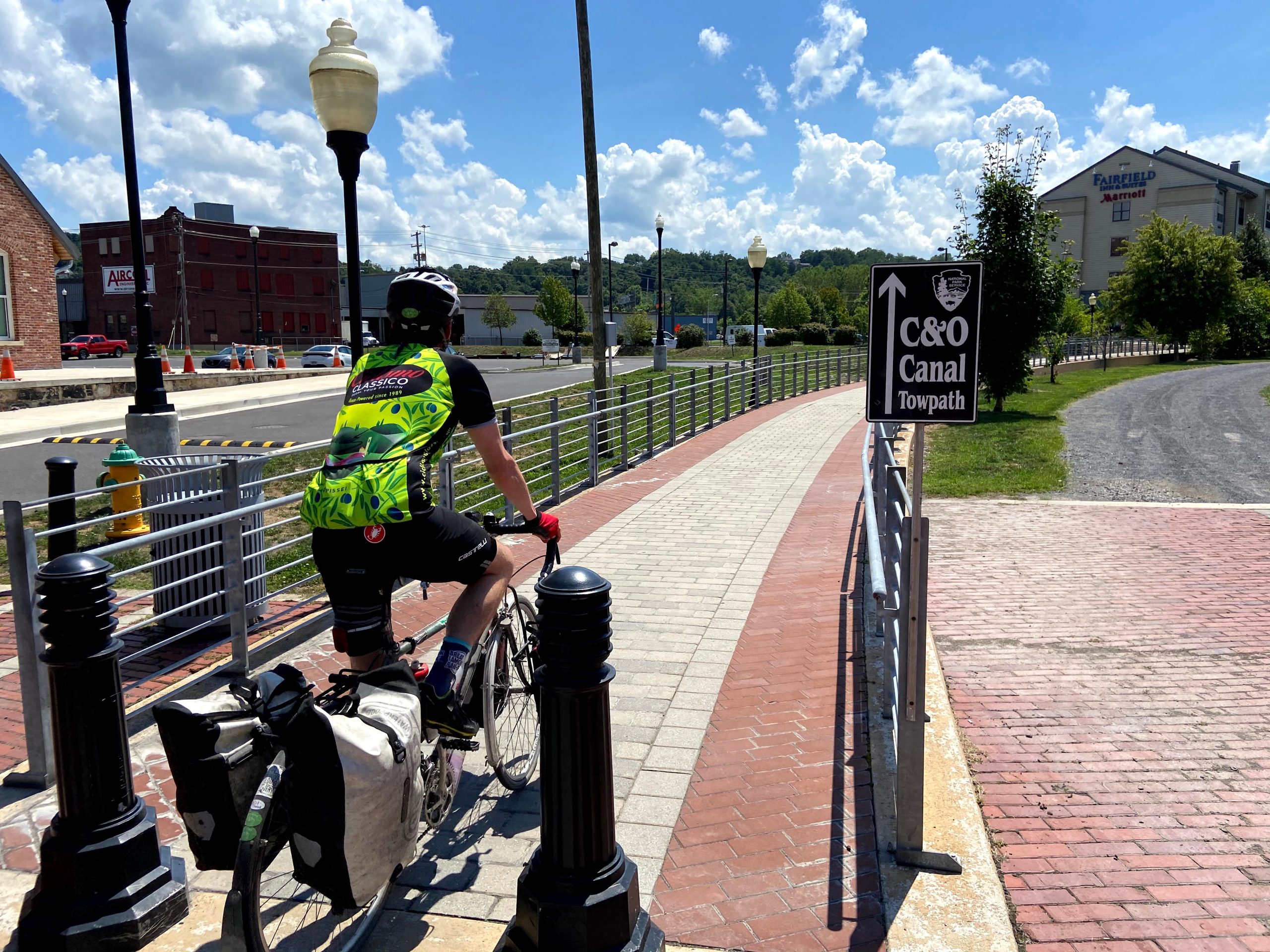The Great American Rail-Trail

Billboard
Skyscrapper
Halfpage
The Great American Rail-Trail is an ambitious project by Rails-to-Trails Conservancy. This organisation transforms former rails into wide off-road paths. Read more about their vision to connect the US.
An all-new American experience
The envisioned Great American Rail-Trail is designed to offer an “all-new American experience”. It would run through 12 states and the District of Columbia, serving around 50 million people who live within 50 miles of the route. Economic and community opportunities along the 3,700 miles-long multi-use trail between Washington state and Washington D.C. would be created.
The Rails-to-Trails Conservancy (RTC) is the US’s largest trails organisation. It aims at providing access to free, accessible, and safe places where everyone can walk, bike, and be active. The organisation believes that rail-trails “have the power to transform communities and create joyful, vibrant public spaces that are equitable and inclusive.”
The Great American Rail-Trail project will provide a safe, seamless, and scenic pathway stretching across the US, inviting walkers and cyclists to discover America’s heritage by trail. David Burwell, co-founder of the organisation, said: “One day, you could go across this entire country on flat, wide, off-road paths. I want rail-trails to be America’s Main Street.”
The possibility of a rail-trail spanning the country exists since the mid-1980s. The work of RTC and others has already resulted in many new rail-trails. An analysis of RTC’s database shows that the preferred route of the Great American Rail-Trail is more than 50 percent complete.

A new use for old railways routes
The Great American Rail-Trail will link towns and cities along its path, creating an environment for walkers and cyclists, but also for flora and fauna. Existing trails, such as Nebraska’s 219-mile Cowboy Recreation and Nature Trail, already one of the longest in the States, would be part of it. When completed, the Great American Rail-Trail will make for a beautiful journey from mountains to plains to the Pacific.
By reusing old railways, currently lost spaces will be revitalised. RTC hopes that this will also be a way to re-energise dozens of communities living close to the preferred route. Especially in the country’s Midwest, which has suffered decline after decreasing manufacturing demands in the last decades, there are many unused railway lines. They present opportunities to rebuild and reconnect.
Already, the existing rail-trails in the States and elsewhere see an increased demand for campsites, bike repair services, restaurants, and breweries. Activities and venues along the route are also very popular, demonstrating some of the social and economic opportunities of this revitalisation project.
According to RTC estimates, the Great American Rail-Trail could generate around 230 million USD in annual visitor spending. It might also create 25,000 new jobs over 10 years. The proposed route will consist of 145 rail-trails, greenways, and other multipurpose paths. It could take another 20 years for the entire trail to be linked up.

From the National Mall to La Push
The proposed route of the Great American Rail-Trail will run through 12 states and Washington D.C., starting (or ending) at the National Mall in downtown Washington. On its way east, it will cross the Appalachian Mountains, the Mississippi River, the Continental Divide, and Puget Sound in Seattle, before reaching the Pacific Ocean at La Push in Washington.
National Geographic mentions the example of Muncie, Indiana, a city of 65,000 people, to show the potential impact of the Great American Rail-Trail. The city already has a paved multi-use trail called Cardinal Greenways. This 62-mile stretch along the Great American passes through the city. Connecting the entire route could bring major growth for local bike shops, tourism organisations, and city landmarks, as well as cafés, breweries, and restaurants. At the same time, locals are hoping to open the eyes of their neighbours to the many natural beauties of the area.

Finding the funding for the Great American Rail-Trail
Travellers can already take advantage of one of the many existing rail-trails in the US, which are mapped by RTC. But there are also more than 80 trail gaps for the envisioned Great American rail-trail. Especially in Wyoming and Montana, large sections of the route remain unmapped. Challenges such as geography, old bridges, or lack of funding can stop the progress.
However, RTC has seen a lot of support since announcing its Great American vision in 2019. More than 75 million USD in public and private funding has been secured, according to the organisation, to help build out the trail. Currently, more than 100 miles are in development.
Rail-trails are a popular revitalisation approach for former railways. They are typically constructed once a railway has been abandoned and the track has been removed. Sometimes, they share the right of way with active railways, light rail, or streetcars, or with disused tracks. In most cases, rail-trails are designed for non-motorised traffic. Their gentle grades, structures such as bridges and tunnels, and passage through historical areas account for their popularity. Many rail-trails are long-distance, while linear parks or greenways are shorter versions.
Read more: Singapore’s bicycle corridor is another example for creating non-motorised traffic axes.












